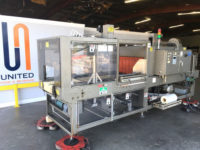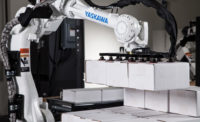Lab test trials save beverage-makers time, money
Advancements in technology improve product quality

According to a 2018 article titled “SAT Scores Rise as Number of Test-Takers Tops 2 Million” in Education Week, approximately 2.1 million students among the 2018 graduating class took the SAT exam. Although fewer colleges and universities require SAT or ACT scores as part of the admissions process, the number of high school students who took the standardized test show that these still remain integral parts of secondary education. When it comes to beverage production, “performing well” on a test run can be just as vital for beverage-makers as standardized testing is for today’s students.
“Manufacturers use lab testing/inspection equipment to ensure that they are providing the highest quality products to their customers,” says Mei Gong, North America product marketing manager, and Rafael Lima, global product manager, for Columbus, Ohio-based METTLER TOLEDO. “In every step of the process starting from raw materials, intermediates, to final products, manufacturers check to make sure the products meet the defined parameters. For beverages, some common parameters include microbiological testing, color, sugar content, alcohol level, acid content, and many more.”
David M. Miles, executive vice president for Raleigh, N.C.-based MicroThermics Inc., explains that in new product development, test runs are important to help manufacturers save money and avoid future headaches.
“When companies develop new products (formulas) they want a specific target identity (flavor, viscosity, color, scent, texture, mouthfeel, etc.) for the finished product — after it’s been processed at the production plant,” he says. “However, the processing done at the production plant (HTST/UHT/aseptic processing, pasteurization, sterilization, etc.) causes changes in the product. These changes cause the product to not have the product identity they want.
“For example, what started out, a new formula of a bright colored, strawberry-guava protein smoothie ends up brownish, gritty and sour after processing,” Miles continues. “Thus, it needs to be reformulated with a combination of ingredients that do not change during processing, and ingredients that change in a way that create the product identity they want after processing. Doing this in a production plant is too expensive and slow. It may cost $20,000 or more per day and they will only get one maybe two batches done in that day.”
By using laboratory ultra-high temperature processing (UHT) or high-temperature/short-time (HTST) processing equipment, brand owners can run numerous tests in a day, thereby streamlining the new product development process, he adds.
“With an accurate, easy to use processor, a researcher can process up to 20 or more formulas in a day,” Miles explains. “Thus, they can process multiple formulas, evaluate them, reformulate, then process the new formulas to reach a final version that will work in the production plant. This eliminates failed plant trials at production scale and can be done quite quickly. In the end, they make [research and development] (R&D) much more efficient, save time and reduce R&D costs.”
However, Miles cautions that it’s crucial that the lab testing processor accurately simulate the production plant.
“If the laboratory processor does not accurately simulate the production plant, then the work done in the lab is useless, since the final formula will ultimately fail at the production plant,” he says. “This actually causes more expense than savings in time and in money.”
To support the new product development process, MicroThermics manufacturers lab testing equipment as and offers its own testing services.
“We build and sell equipment of course, but we also have extensive Miniature Plant Trial Services,” Miles says. “We offer HTST, UHT and aseptic processing, for products ranging from juices and drinks to coffees, smoothies, milk and milk replacements, ice cream products as viscous as cheese sauces and puddings.”
In addition to offering customized, small-scale UHT, HTST and aseptic processing equipment, the company recently developed microwave processors, which feature Aseptiwave heaters and its aseptic laboratory fillers.
“Our microwave processor’s heaters raise the temperature of the product rapidly without heated surfaces,” Miles explains. “This results in products that taste fresh and have virtually the same nutrient content as fresh products.”
METTLER TOLEDO also recognizes the various need states that beverage-makers require when it comes to lab testing equipment.
“METTLER TOLEDO has a wide portfolio of instruments designed to help manufacturers throughout the process, from quality control to packaging,” Lima and Gong say. “Just to name a few, in lab testing and inspection, METTLER TOLEDO offers portable and benchtop density meters to determine the density, specific gravity, or alcohol content of the products. The portable and benchtop refractometers allow manufacturers to determine the °Brix value or other related units.”
The two also note that METTLER TOLEDO now offers seven new density meters and four new refractometers.
“With the refractometers, we updated the Excellence benchtop family with 4 new refractometers, the R4, R5, RX4, and RX5,” Gong and Lima say. “METTLER TOLEDO designed the RX4 and RX5 as external instruments that can be combined with the density meters. The advantages of this multi-parameter setup include time-saving, simple workflow, and easy setup.” BI
Looking for a reprint of this article?
From high-res PDFs to custom plaques, order your copy today!






